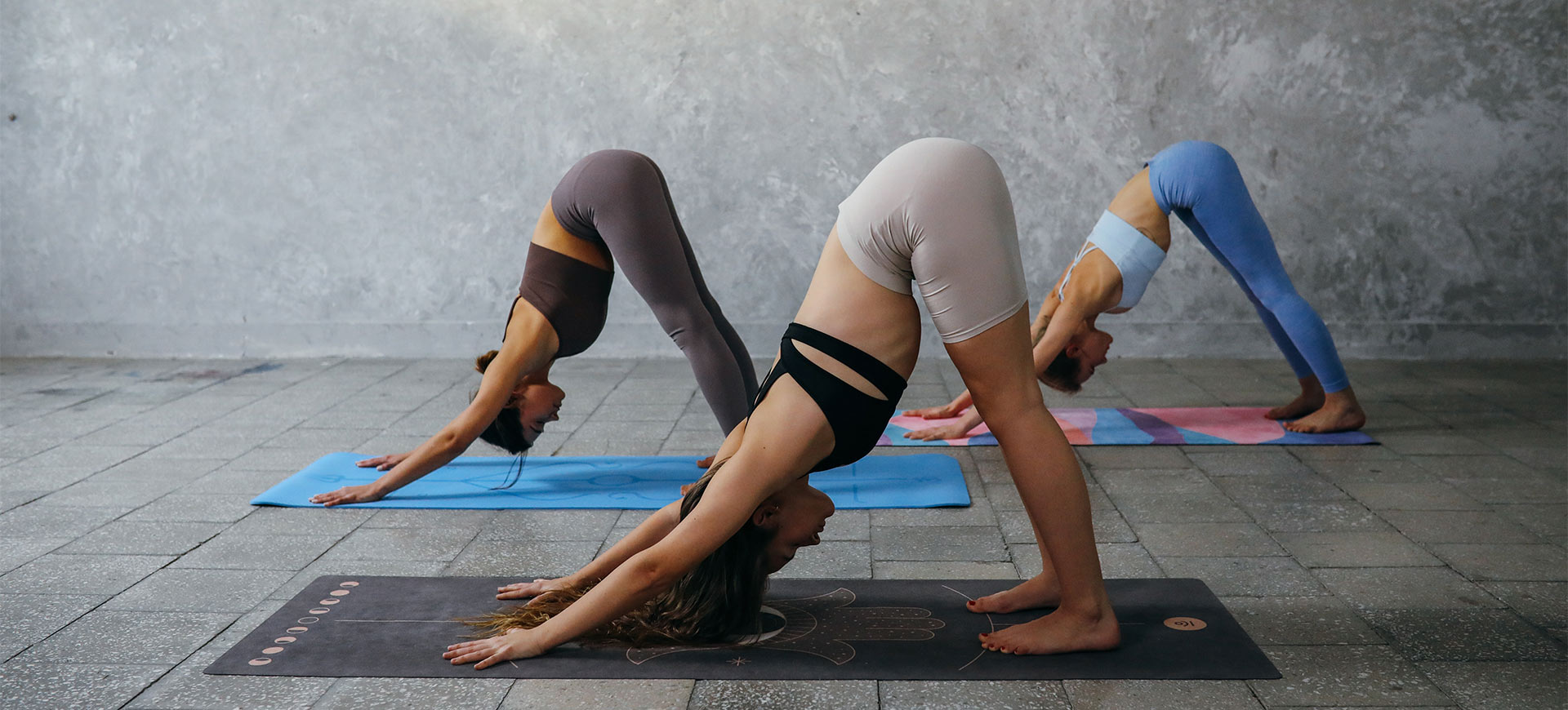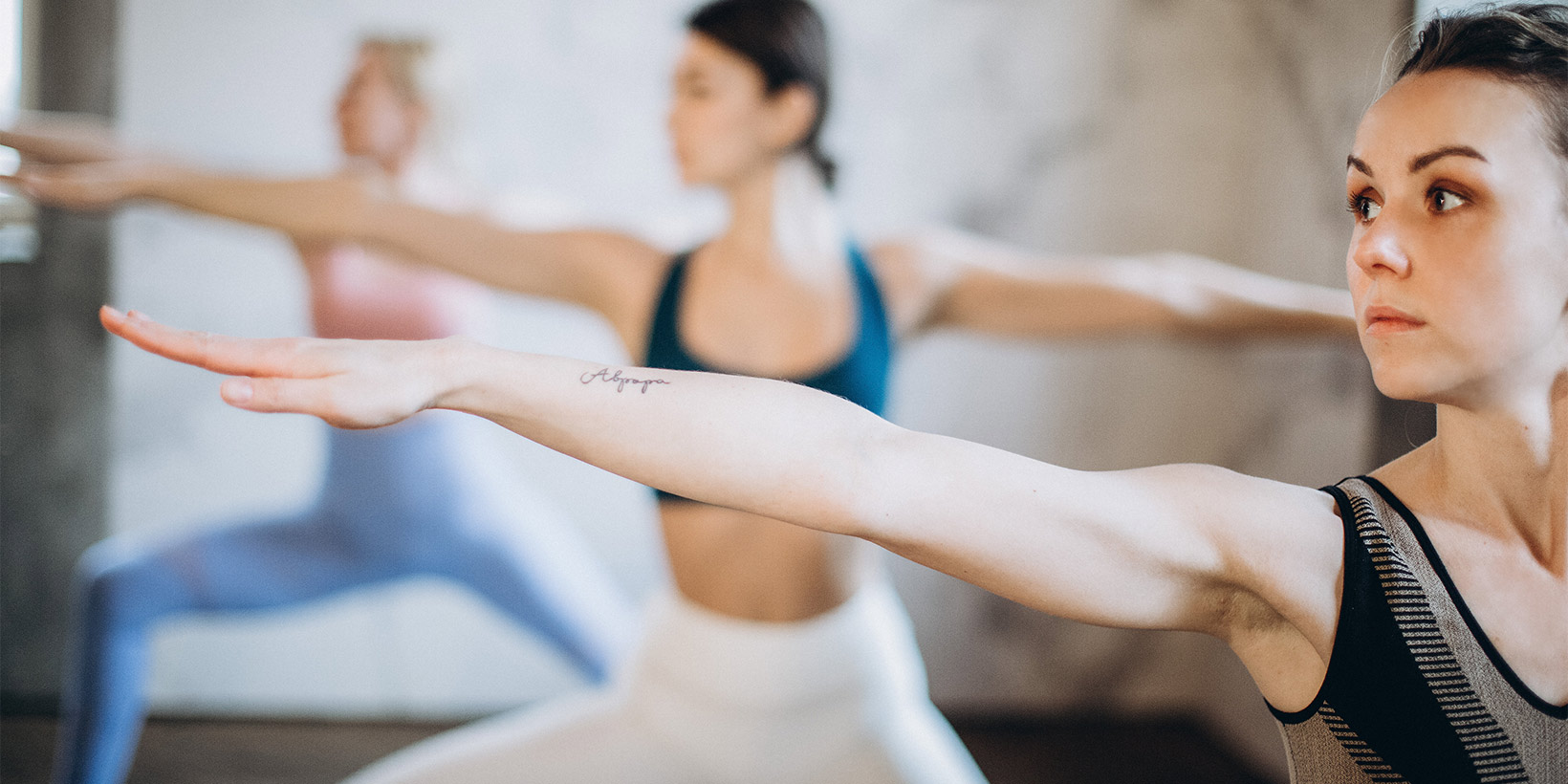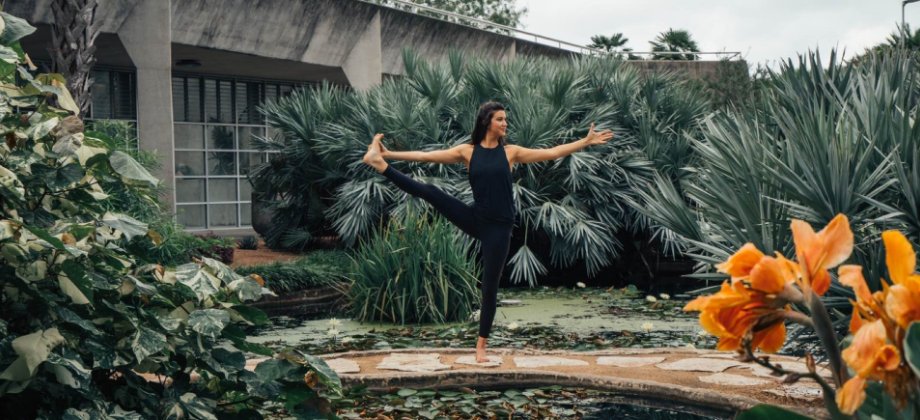
Tips for Teaching Yoga in a New Language: What I Learned Giving Classes Abroad
Teaching yoga abroad is something that many yoga teachers dream of. With so many incredible opportunities available, it can be hard not to imagine trading studio time for a beach or jungle location every once in a while. But if you’ve ever looked for yoga teaching jobs abroad, you might also have seen in the job description that the classes aren’t to be given in your native language.
This might be the moment that you sigh wistfully, and return to the homepage of your search. But if you have the basics of a second (or even third) language rattling around in your brain somewhere, then use it! Although taking the leap from high school speaking classes to teaching a class might seem too huge a gulf, it doesn’t have to be. A summer of teaching yoga classes in French - definitely not a language that I was close to being fluent in when I started - taught me this.
The day of teaching my first class in French was probably the most nervous I’d been in my life. I thought of every excuse possible to cancel - even down to using the fact that the mats I’d ordered hadn’t arrived yet. Needless to say, all of my students were happy to bring their own, and no one seemed to mind that there weren’t colour co-ordinated rows of mats waiting for them when they arrived. In the end, that class and all those that followed reminded me of how many opportunities we have to grow. Not only as teachers, but within ourselves.
The ability to use cues that your students are familiar with means that your classes will flow much better.
Here’s what I learned from a summer teaching abroad, and in a new language. No matter what your native language is, and no matter what language you’re transitioning into, these tips will all still apply!
Don’t be afraid to use hands-on assists
Each of us feels differently about getting hands-on with our students, and it’s something that every yogi will have to consider on their teaching journey. Whilst many teachers may prefer to avoid hands-on assists, if you are comfortable and familiar with using touch in your classes, it can be an invaluable addition when you’re teaching abroad.
Why? The physiological benefits of skin-on-skin contact in a yoga setting are numerous, all thanks to the release of oxytocin, a neurotransmitter that’s also known as the ‘cuddle hormone’. Aside from being a natural stress reliever, oxytocin plays an important role in all types of social bonding and promotes trust, openness, and cooperation. All of which are key when it comes to building relationships with your students - even more so when you’re teaching in a new language and a new setting. Hands-on assists can help nurture positive relationships with your students and bridge any gaps that you might feel open up as a result of not sharing the same native language.
If you do feel comfortable and confident using hands-on assists, remember to check with your students before the class that they’re okay with it. Additionally, when you’re teaching in a new country, it’s important to ask a fellow yoga instructor or even the locals if touching other people is culturally appropriate before you go ahead and do so.
Ask a local yogi for help with translation
This can’t be stressed enough - Google translate is not your friend when it comes to translating your yoga cues! So much of what we say as teachers is figurative, which means that it doesn’t actually make a lot of sense once you start to translate it. Phrases like “breathe length into your spine” or “float your foot towards the ceiling” can lose all sense and meaning if you try to translate word for word, and even basics like “crown” and “tail” - which sound so much more poetic in English than “head” and “coccyx” - do not always have the meaning that you hope they do if you stick with literal translations!
What your students hopefully will remember is the warmth, humility, and genuineness that you brought to your class.
The most helpful thing you can do before you start preparing your classes is to make a list of all of the basic cues and any expressions that you’d like to use and ask a native speaker to help you out with how to translate them. Even better if they’re a yogi! The ability to use cues that your students are familiar with means that your classes will flow much better, and there won’t be any confused faces as they try to untangle the meaning of your personal expressions. If it’s been said that colloquial expressions can’t be directly translated, this is certainly even more true for yoga expressions!
Don’t worry about filling every silence with cues
As with many things in life, less can definitely be more. If your vocabulary in your second language is more limited - mine certainly was - rather than repeating yourself, let silence do some of the talking. For poses suited to longer holds like twists and restorative postures, those moments of silence can be priceless for your students. Of course, guiding each yogi safely into the asana is still essential, and you shouldn’t just leave them hanging out in the pose without a word of encouragement or tips on how to find a deeper expression. But you certainly don’t need to talk all of the time.
If you feel lost for words, instead of scrambling to put something together, simply allow your students to explore the quiet. Although each of us has our own teaching preferences when it comes to how much we’re comfortable with not speaking during class, it’s certain that these are the moments that allow them the space to turn their attention inwards even more. So instead of worrying about constant communication, think more about holding space for your students.

Remember that your energy is the most important thing you bring to class
As long as your energy is positive and authentic, it will translate to your students - and make up for any language gaps! There is nothing more powerful than the energy that we choose to share with others, and as a means of communication, good energy speaks louder than words. You might find yourself lost for exactly the right words to explain something, but as long as you keep your energy positive and flowing, the words will matter less.
At the end of the day - or rather, at the end of your class - no one will mind or even remember if you made a language mistake. What your students hopefully will remember is the warmth, humility, and genuineness that you brought to your class. These are the things that translate without needing any translation.
Relax - your students aren’t there to judge you for your language skills
It’s not exactly huge news, but no one has ever gone to a yoga class with the ulterior motive of judging their teacher. Ever. Your students are also yogis like you and whilst we all sometimes have slightly different reasons for going to class, you can be certain that it isn’t to critique you! If you make a mistake with the language, don’t worry. No one will hold it against you. In fact, you’ll probably be pleasantly surprised by how encouraging and understanding they’ll be (if they even notice at all).
In the end, my students became some of my greatest and kindest teachers.
With hindsight, this seems glaringly obvious. When you’re starting out, or thinking of branching out into teaching in your second language, it can be hard to keep in mind. But remember everything that you tell your students about how your class is a safe space, somewhere they can let go of judgements about themselves and just be? Well, practice what you preach because the same thing applies to you.
In the end, my students became some of my greatest and kindest teachers. Some would offer me advice after class for how I could better say something or even just provide corrections for where I had made mistakes. Even during class, if I ever forgot the name of a posture or struggled to express myself, they would offer suggestions. Whilst you might worry that this isn’t the height of professionalism, it’s more than likely that no one else is thinking the same thing.
Show, don’t just tell
Practicing along with your students is another issue that divides yoga teachers. Some teachers may prefer to use only verbal cues, and walk between their students throughout. On the other hand, some never move from their own mat, preferring to demonstrate the entire flow from the front of the class. If you’re usually in the former group, when teaching abroad, it can be invaluable to think about changing your style.
For that first class of mine where the mats hadn’t arrived, I felt as though I was barely speaking compared to how much I usually do. So, to make up for this, I demonstrated. I practiced the whole flow with my class, and they never missed a beat. If a picture tells a thousand words, showing your students exactly what to do works the same way. Even if it’s not your usual style, you can be sure that if you flow along with your class, any language hiccups will be easily smoothed over since the class can see what you’re trying to say.






